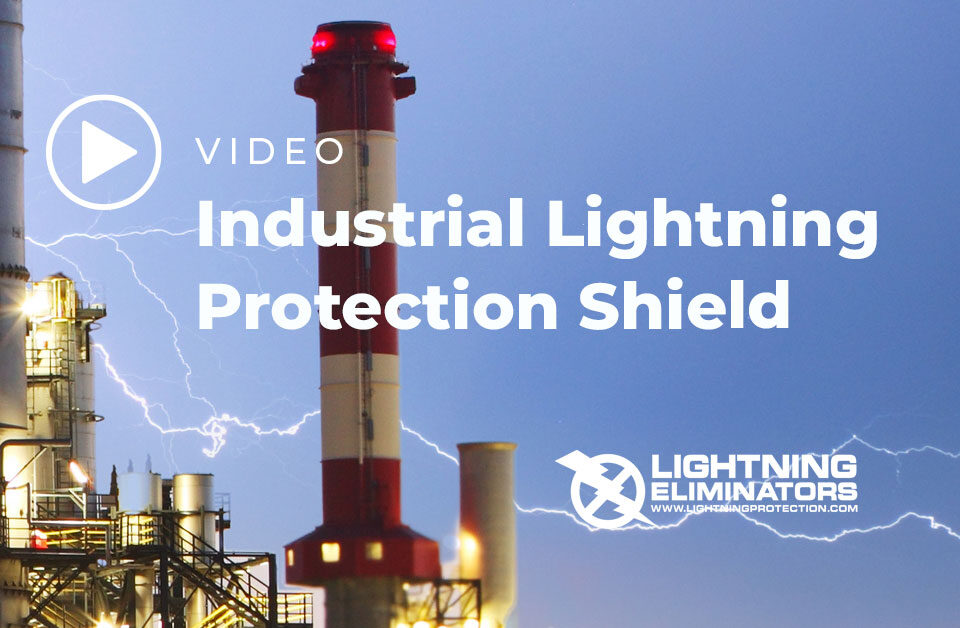- We Prevent Lightning Related Problems.

Video: Industrial Lightning Protection Shield
May 16, 2025Video: Lightning Protection System

Inside lightning can generate significant heat, and the protection system must minimize this heat to prevent fires or melting building components. It starts with strike termination devices or lightning rod air terminals, which create a preferred point of strike. Cables run from the termination devices along the roof edges and down through the building, passing the energy to a grounding mechanism that disperses it into the ground.
This system is permanently grounded to disperse a lightning strike safely, encapsulated or buried with chemical backfill to lower resistance. Surge protection devices are installed at every service entrance to stop utility lines from spreading lightning into the building.
Lightning Eliminators offers a comprehensive lightning protection system with three product lines: Dissipation Array Systems, Spline Ball Terminals, and Streamer Delaying Air Terminals. Grounding and bonding products include Smart Ground Testing, Chem Rod, Ground Augmentation Fill, LEC Weld, Surge Protection Devices, Facility Guard Transient Limiters, and Hybrid Surge Protectors.
READ MORE: Lightning Preventon System

